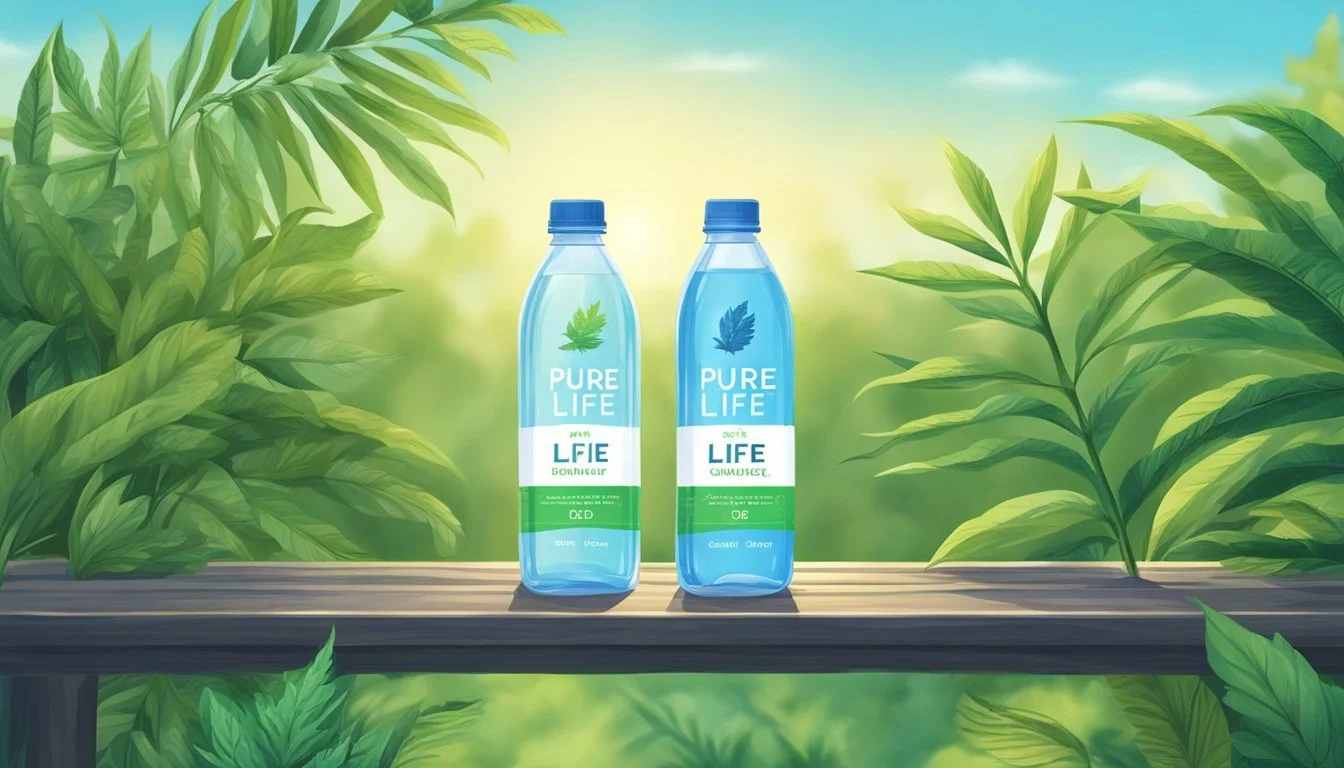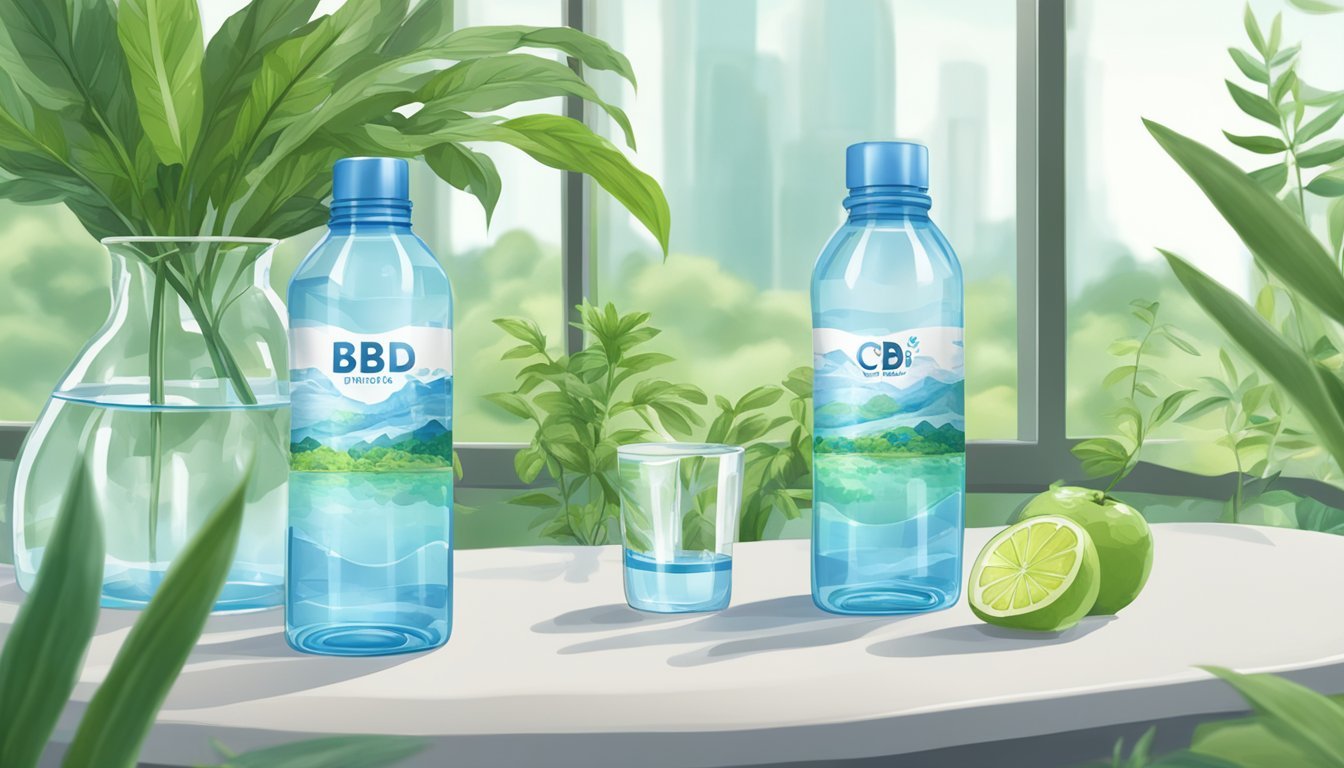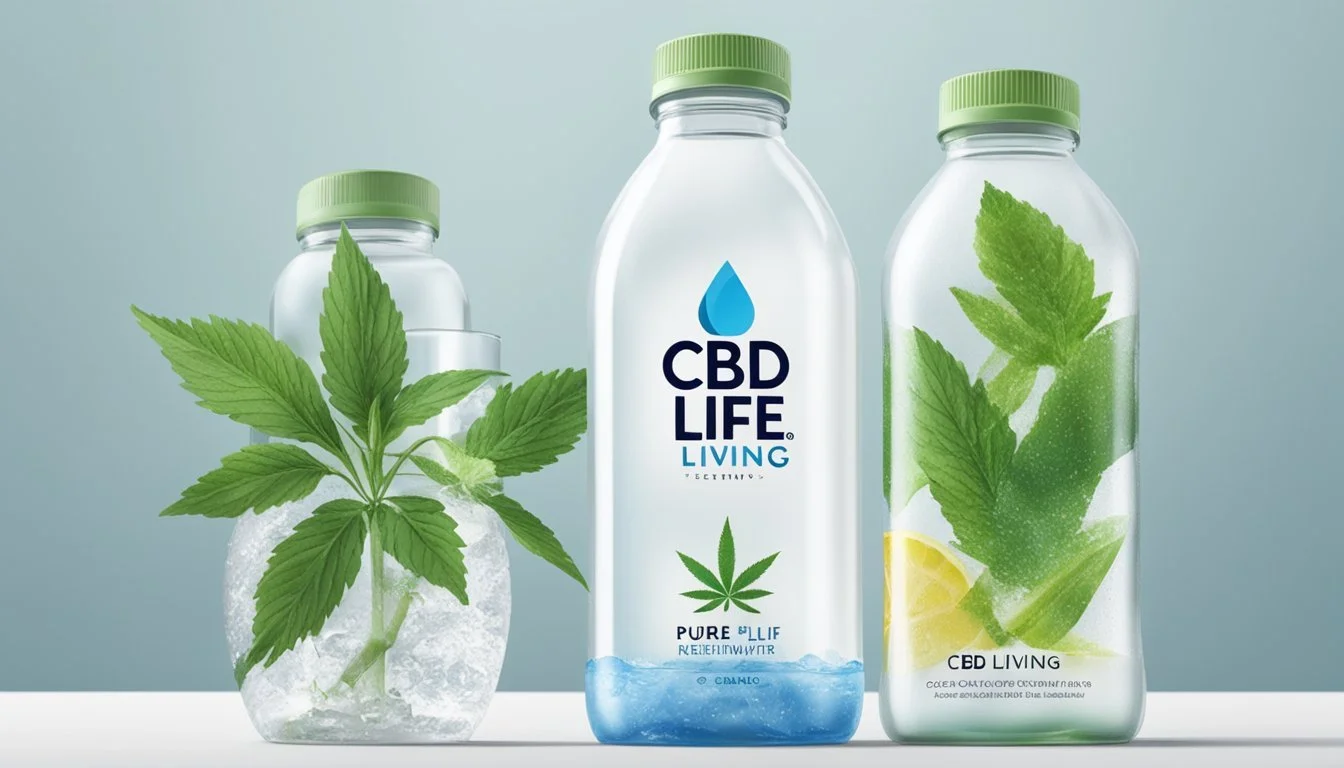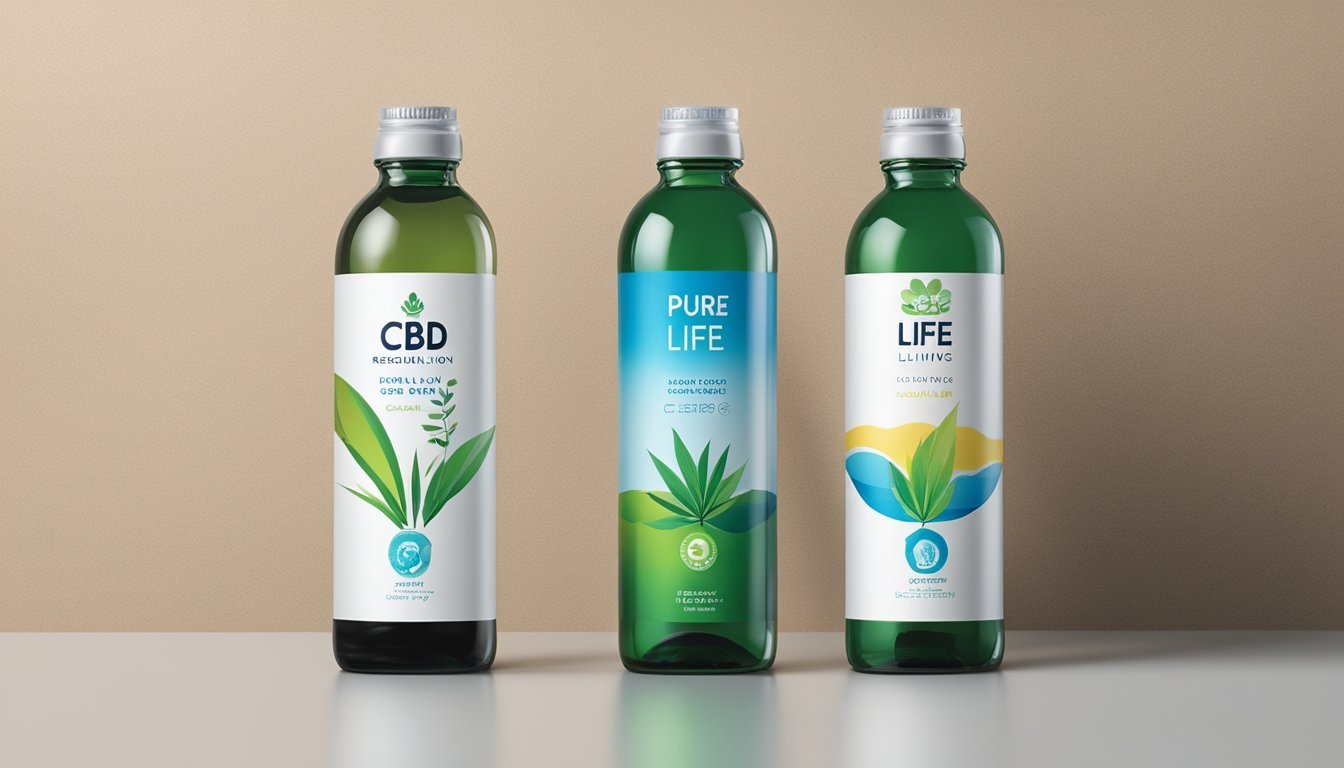Pure Life vs. CBD Living
Comparing Top Bottled Water Choices
Choosing the right bottled water can be a simple yet essential decision for daily hydration. When comparing Pure Life and CBD Living, each offers unique benefits tailored to different consumer preferences. Pure Life is known for its wide availability and reliable taste, sourced from esteemed origins, but often criticized for being average in terms of purity and packaging.
CBD Living, on the other hand, caters to those seeking an added boost from their water, infused with 10 mg of organic CBD per bottle. For consumers looking for a wellness boost from their hydration routine, CBD Living is the superior choice. It costs more than regular bottled water but provides additional benefits like potential stress relief and enhanced relaxation.
Ultimately, the deciding factor lies in personal needs and expectations. Standard refreshment and widely trusted quality are hallmarks of Pure Life, while CBD Living appeals to those exploring the benefits of CBD in a convenient and hydrating form.
Understanding Bottled Water
Bottled water comes in many forms, each varying in source, composition, and benefits.
Spring Water
Spring water is collected from natural springs. It often contains naturally occurring minerals like calcium and magnesium, contributing to its distinct taste.
Purified Water
Purified water goes through extensive filtration processes such as reverse osmosis or distillation. These processes remove impurities and contaminants, resulting in high purity.
Tap Water
Tap water is readily available and supplied through municipal systems. While it's highly regulated, it may contain additives like chlorine and fluoride. Its quality can vary based on location.
Minerals and Electrolytes
Minerals like calcium, potassium, and magnesium are essential for maintaining body functions. Electrolytes, such as sodium and potassium, help with hydration and electrolyte balance. Some bottled waters, especially marketed as sports drinks, are enhanced with additional electrolytes.
A quick comparison can be seen below:
Water Type Source Key Features Spring Water Natural springs Contains natural minerals Purified Water Various sources Highly filtered for purity Tap Water Municipal systems Treated with chlorine, may contain fluoride Mineral Water Springs and wells High mineral content, often naturally occurring Electrolyte Water Various sources Enhanced with electrolytes like sodium and potassium
Each type offers distinct advantages and potential drawbacks, making the choice a matter of individual preference and needs.
Overview of Pure Life and CBD Living
This section provides a detailed comparison of Pure Life and CBD Living, focusing on their brand histories, product range, and unique selling propositions.
Brand Histories
Nestlé Pure Life is a well-known brand under the global conglomerate Nestlé. Launched in 1998, it quickly gained popularity for offering purified bottled water sourced from various natural springs. Nestlé emphasizes stringent purification processes to ensure the highest safety standards.
CBD Living, founded in 2013, integrates CBD into wellness products, including their CBD-infused water. Originating from California, the brand aims to provide the benefits of CBD in an accessible format. Their use of nanotechnology distinguishes them in the health and wellness market.
Product Range
Nestlé Pure Life offers a wide variety of bottled water products, including standard purified water, flavored options, and different bottle sizes to cater to diverse consumer needs. Their focus remains on hydration and purity, with extensive distribution making it readily available.
CBD Living provides a niche range, primarily centered around CBD-infused water. Their product line also includes other CBD-infused items such as soaps, gummies, and capsules. This diversification highlights their emphasis on overall wellness and multi-faceted CBD benefits.
Unique Selling Propositions
Nestlé Pure Life prides itself on delivering consistently clean and safe drinking water. Their robust purification process, extensive quality control, and global distribution network underscore their commitment to health and accessibility.
CBD Living stands out with its innovative use of nanotechnology, which enhances the bioavailability and effectiveness of their CBD-infused products. Their focus on health benefits combined with the wellness attributes of CBD makes them a unique player in the beverage market.
Water Quality and Sources
Both Pure Life and CBD Living provide bottled water with distinct characteristics concerning water quality and sources. This section explores the mineral content, pH levels, origins, and filtration methods of each brand.
Mineral Content and pH Levels
Pure Life water is sourced from municipally supplied sources which undergo purification processes that include reverse osmosis. This method removes most dissolved minerals, resulting in a product with low mineral content and a neutral pH level, typically around 7.
CBD Living water, on the other hand, is known for its higher bioavailability. It often features added minerals and a slightly alkaline pH level, between 7.4 to 7.8. The alkaline nature is believed to enhance hydration and may provide additional health benefits.
Water Source and Filtration
Pure Life primarily sources its water from treated public water systems. The water is then filtered through multiple steps, including reverse osmosis and carbon filtration, ensuring it is free of contaminants and impurities.
In contrast, CBD Living sources its water from natural springs and wells. The filtration process includes nano-technology that infuses the water with CBD, while maintaining its natural mineral content. This combination is marketed for its enhanced hydration and potential therapeutic benefits linked to the CBD infusion.
Health Benefits and Claims
Pure Life offers extensive hydration benefits, while CBD Living presents potential therapeutic advantages associated with CBD oil.
Hydration and Electrolytes
Proper hydration is essential for maintaining bodily functions and overall health. Pure Life bottled water ensures high-quality hydration through a comprehensive distillation process.
This process removes impurities, making it a reliable choice for daily hydration needs. Additionally, water like Pure Life often contains essential electrolytes, such as sodium, potassium, and magnesium. These electrolytes help maintain fluid balance, muscle function, and nerve signaling. Staying well-hydrated can support cognitive function, physical performance, and overall well-being.
Potential Benefits of CBD
CBD Living water infuses cannabidiol (CBD) into the beverage. CBD is recognized for its potential medicinal properties, which may include alleviating anxiety, chronic pain, and inflammation.
Albeit the concentration in CBD water is often minimal, regular consumption might still offer subtle benefits. The use of nanotechnology in some brands aims to enhance the absorption of CBD in the body. While research is still emerging, users seeking relief from ailments like anxiety and inflammation might find CBD Living a supplement to their overall wellness routine.
Taste and Consumer Experience
In assessing Pure Life and CBD Living Water, consumers often prioritize aspects such as flavor, mouthfeel, and aftertaste. A detailed examination of these factors reveals distinct experiences offered by each brand.
Flavor Profiles
Nestlé Pure Life is renowned for its crisp and pure taste. Derived from a blend of purified water sources, it maintains a neutral flavor profile. This makes it a popular choice for those who prefer a clean, refreshing drink without any added flavors.
CBD Living Water, on the other hand, incorporates 10 mg of organic CBD. While it remains fundamentally water, some users notice a slight hint of natural earthy flavors. These nuances can be subtle but are sometimes evident to those with a keen palate.
Mouthfeel and Aftertaste
Pure Life scores high with its smooth mouthfeel. The water is filtered and purified to ensure consistency and softness, providing a pleasant sensation. After consumption, it leaves no lingering taste, making it a favored option for everyday hydration and meal pairing.
CBD Living Water is slightly different in this aspect. The integration of CBD particles can result in a marginally thicker mouthfeel. Its aftertaste, while not overpowering, may carry a faint hint of its natural ingredients, which could be noticed by some consumers.
In taste tests, both Pure Life and CBD Living Water perform distinctively, catering to varied preferences based on the unique elements they infuse into their products.
Safety and Regulation Compliance
Both Pure Life and CBD Living must adhere to strict safety standards and regulations to ensure their bottled water is safe for consumption. This section examines FDA standards and packaging concerns for these brands.
FDA Standards and Testing
The FDA regulates bottled water to ensure it meets safety standards under the Federal Food, Drug, and Cosmetic Act. Both Pure Life and CBD Living must comply with these regulations.
Regular testing for contaminants is required. The FDA mandates tests for bacteria, chemicals, and other harmful substances. Pure Life, being a large, established brand, has rigorous testing protocols.
CBD Living, a newer entrant, also follows FDA guidelines. Their products must pass similar stringent tests. Consumers can be confident that both companies provide water that meets federal safety standards.
Packaging and Contaminants
Packaging is crucial for maintaining water quality. Pure Life uses plastic bottles that must be free from harmful chemicals like BPA. The FDA monitors the materials used to ensure consumer safety.
CBD Living employs packaging that complies with FDA-approved standards. Besides, their water includes CBD, requiring additional scrutiny for contaminants.
Contaminants can originate from various sources. Regular tests reveal potential contaminants like fertilizers and solvents. Both brands ensure that their water is within safe limits for all potential contaminants.
Maintaining high packaging standards and vigilant testing practices helps both Pure Life and CBD Living provide safe bottled water products.
Environmental and Economic Implications
Environmental and economic considerations play a critical role in evaluating whether Pure Life or CBD Living bottled water is a more suitable choice. Factors such as plastic waste, recycling capabilities, and price differences must be analyzed.
Environmental Impact
Pure Life and CBD Living both use PET containers, which have significant environmental implications. PET plastic is recyclable; however, the frequency and efficiency of recycling practices vary.
Improperly disposed PET bottles contribute to plastic waste, harming ecosystems and wildlife. The production process for PET also involves substantial carbon emissions.
Pure Life, part of the bottled water industry experiencing a surge, increases overall plastic use. Proper storage impacts the product’s shelf-life and its environmental footprint. Good storage practices can extend the shelf-life of bottled water up to two years.
Cost Factors
CBD Living water is notably more expensive compared to Pure Life. A typical bottle costs around $3.99 for CBD Living, whereas Pure Life is generally more affordable.
This price difference stems from the inclusion of CBD, a premium ingredient. Budget-conscious consumers may find Pure Life more attractive due to its lower price point.
However, Pure Life’s target market consists of general hydration needs, while CBD Living caters to niche health and wellness markets. This distinction affects consumer choices based on specific preferences and perceived benefits.
Technological Innovations in Bottled Water
Recent advancements in bottled water technology have been instrumental in enhancing both the quality and functionality of products on the market. Key innovations include the use of nanotechnology in CBD-infused beverages and improvements in water filtration and purity methods.
Nanotechnology in CBD Water
Nanotechnology has revolutionized the production of CBD-infused beverages. By using nanoparticles, manufacturers create a more stable and homogenized emulsion of CBD in water.
This advanced technique enhances the bioavailability of CBD, meaning the body can more efficiently absorb and utilize the compound. CBD Living Water, for instance, utilizes nanotechnology to ensure that each bottle contains evenly distributed nanoparticles of CBD, providing a consistent experience.
Moreover, this technology helps prevent the separation of CBD from the water, ensuring even distribution and longer shelf life. Mountjoy Sparkling, another notable brand, employs similar methods to maintain the integrity and effectiveness of their CBD water products.
Advancements in Filtration and Purity
Improvements in filtration technologies have significantly elevated the standards of bottled water purity. Reverse osmosis is now a common method used by leading brands to ensure the highest levels of purity. This process removes contaminants by pushing water through a semipermeable membrane, effectively filtering out impurities and minerals.
For instance, Nestle Pure Life implements advanced filtration techniques to guarantee clean and safe drinking water. These advancements are crucial in maintaining the health benefits and overall quality of the water.
Further, innovative filtration systems are being developed to not only purify but also enrich the water with essential minerals, enhancing its taste and health benefits. These technologies ensure that consumers receive the purest, best-tasting water possible.
Comparative Analysis
Assessing the characteristics of Pure Life and CBD Living bottled waters highlights significant differences in price vs. quality, health benefits, and comparisons to other hydration options.
Price vs. Quality
Pure Life is known for affordability, making it accessible to a broader audience. It employs a meticulous filtration process without significantly raising costs. In contrast, CBD Living is positioned as a premium product due to the infusion of organic CBD, contributing to its higher price.
Consumers comparing these two should consider if the added CBD benefits justify the additional expense, especially when measured against the consistent quality provided by Pure Life. Both brands strive to deliver clean and refreshing hydration but cater to different price sensitivities and expectations of value.
Health Benefits Comparison
Pure Life focuses on delivering clean, purified water, beneficial for those seeking an everyday hydration option. Pure Life undergoes extensive filtration, ensuring impurities are minimized, making it a neutral, safe choice for hydration.
CBD Living offers added health benefits due to its organic CBD infusion, potentially aiding in stress relief and inflammation reduction. For consumers looking for possible therapeutic effects, CBD Living presents an edge. However, this comes with a consideration of higher costs and whether its benefits align with individual health goals.
Bottled Water vs. Alternatives
Pure Life, a form of distilled water, and CBD Living, a type of CBD water, present different alternatives to traditional bottled water. Pure Life competes with brands offering alkaline and mineral water, appealing for its purity and affordability.
CBD Living, however, stands out against sugary drinks and other boutique beverages due to its potential health benefits. Both options highlight hydration but target different consumer needs: Pure Life for straightforward, everyday use, and CBD Living for those seeking enhanced wellness properties.
Considering these alternatives, Pure Life and CBD Living offer distinct advantages and align with varying consumer preferences and health considerations.
Consumer Guidance
When deciding between Pure Life and CBD Living, it's crucial to consider factors such as the type of water, quality reports, and label information. Each bottled water has unique attributes that can guide consumers in making an informed choice.
Choosing the Right Bottled Water
Consumers should start by identifying their priorities. Pure Life is known for its reliability, offering purified water free from contaminants, which appeals to those looking for basic hydration. On the other hand, CBD Living integrates cannabidiol (CBD), attracting consumers interested in potential health benefits.
Pure Life contains no calories or added ingredients, making it a straightforward choice. CBD Living, with 10 mg of organic CBD per bottle, suits those seeking specific wellness advantages. Pricing is another factor, as CBD Living typically costs more, which may impact the decision for cost-conscious consumers.
Understanding Labels and Reports
Carefully reading labels and quality reports is key. Bottled waters often include information about source, purification methods, and added ingredients. Pure Life labels highlight its purification process, ensuring water safety and taste.
Quality reports provide transparency about water testing, including potential contaminants. Both brands should have accessible reports online or on their packaging. Additionally, checking for any certification signals, such as USDA Organic for CBD Living, can reassure consumers about product authenticity.
Understanding these details helps consumers make informed decisions based on their health priorities and quality expectations. In the end, whether one prefers Pure Life’s simplicity or CBD Living’s specialized benefits, clarity on what each offers will guide the best choice.
More About Pure Life
Cascade Mountain vs Pure Life: Which Bottled Water is Better?
Hawaii Volcanic vs Pure Life: Which Bottled Water is Better?
Hawaiian Springs vs Pure Life: Which Bottled Water is Better?
Icelandic Glacial vs Pure Life: Which Bottled Water is Better?
Nestle Pure Life vs Pure Life: Which Bottled Water is Better?
Pure Life vs Kirkland Signature: Which Bottled Water is Better?
Pure Life vs Whole Foods 365: Which Bottled Water is Better?
Richard's Rainwater vs Pure Life: Which Bottled Water is Better?
Solan de Cabras vs Pure Life: Which Bottled Water is Better?
Talking Rain AQA vs Pure Life: Which Bottled Water is Better?
Whole Foods Italian Still Mineral water vs Pure Life: Which Bottled Water is Better?
More About CBD Living
Aqua Carpatica vs CBD Living: Which Bottled Water is Better?
Cascade Mountain vs CBD Living: Which Bottled Water is Better?
Core Hydration vs CBD Living: Which Bottled Water is Better?
Crystal Geyser vs CBD Living: Which Bottled Water is Better?
Hawaii Volcanic vs CBD Living: Which Bottled Water is Better?
Hawaiian Springs vs CBD Living: Which Bottled Water is Better?
Icelandic Glacial vs CBD Living: Which Bottled Water is Better?
Kirkland Signature vs CBD Living: Which Bottled Water is Better?
Mountain Valley Spring Water vs CBD Living: Which Bottled Water is Better?
Nestle Pure Life vs CBD Living: Which Bottled Water is Better?
Richard's Rainwater vs CBD Living: Which Bottled Water is Better?
San Pellegrino vs CBD Living: Which Bottled Water is Better?
Solan de Cabras vs CBD Living: Which Bottled Water is Better?
Talking Rain AQA vs CBD Living: Which Bottled Water is Better?
Whole Foods 365 vs CBD Living: Which Bottled Water is Better?
Whole Foods Italian Still Mineral water vs CBD Living: Which Bottled Water is Better?






